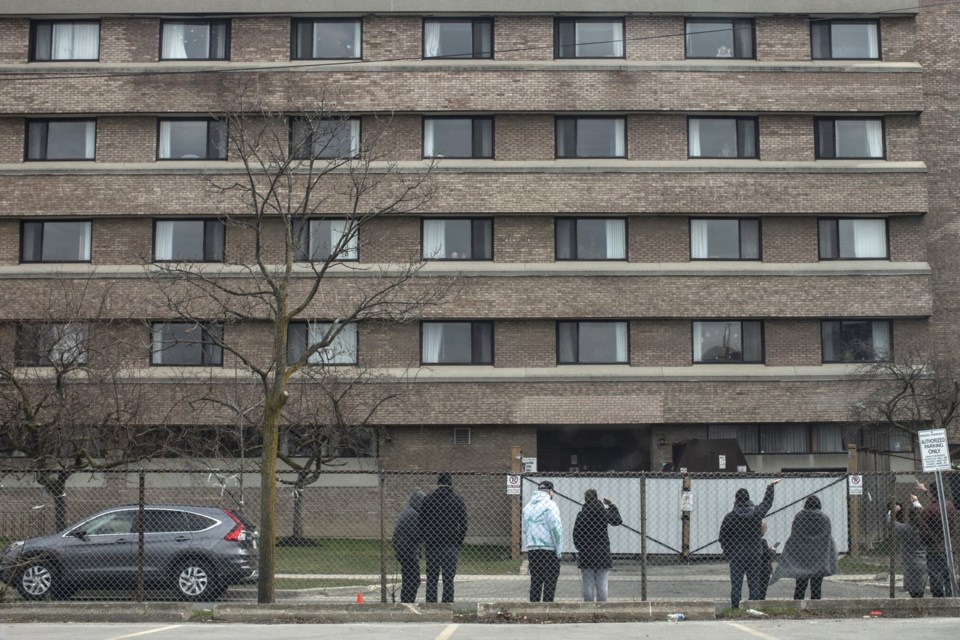TORONTO — Ontario failed to meet its own legislated target this past year for the average number of hands-on hours of care that long-term care residents receive, a newly updated document shows.
The province says it has since reached its goal for the 2023-24 fiscal year, but that happened outside of the timeframe the Progressive Conservative government set out in a 2021 law.
The government says it continues to work toward its next target of ensuring residents get four hours per day of direct care from nurses and personal support workers by the end of the current fiscal year next March.
The first- and second-year interim targets were met, but the target of three hours and 42 minutes by March 31 of this year was missed.
This fall, officials added that information to the bottom of a 2020 staffing plan posted on the Ontario government's website without saying anything publicly — a move that has opposition critics crying foul over transparency.
The updated version of the report says that in the first quarter of the 2024-25 financial year, Ontario "exceeded" its direct hours of care target from the year before.
"In total, the province has provided more than an hour of additional direct care to Ontario's long-term care residents through this government's unprecedented investments. This is a 33 per cent increase in direct care since 2021," the report reads.
A document previously obtained by The Canadian Press through a freedom-of-information request shows that bureaucrats warned the long-term care minister's predecessor about a year ago about the risk of missing the targets.
When then-minister Stan Cho took over the file, the document shows officials told him staffing shortages could mean Ontario would not meet its direct hours of care commitment.
The document said that, as of this year, there is a need for 13,200 additional nurses and 37,700 personal support workers in Ontario.
The situation has not changed much since current Minister Natalia Kusendova-Bashta took over the file in June.
The issue of increasing direct hours of care for long-term care residents won't be solved until staffing shortages are addressed, said Ricardo McKenzie, director of long-term care for SEIU Healthcare — a union representing long-term care workers, including personal support workers and registered practical nurses.
And the issue of staffing shortages won't be solved until workers have stable, well-paying jobs, he said.
"The solution, we believe, I believe, is to provide workers with full-time jobs, middle-class wages, strong benefits and retirement security," McKenzie said.
"Until the government and the employers do that, the situation regarding the turnover of staff is going to get worse."
Government figures suggest that attrition among personal support workers is as high as 25 per cent, meaning up to a quarter of the profession leaves annually.
McKenzie said union data show turnover as high as 38 per cent year over year in long-term care homes.
He said that raises the question of the quality of care residents are receiving, even if the targets for average hours of care are met.
"The question is, is four hours of care the magic number or should we be looking at quality of care?" he said.
"Residents, instead of getting to know their caregiver, and building a relationship with their caregiver, they can't, because it's the new face that they see on a regular basis."
Hospitals and long-term care homes are spending vast amounts of money on staffing agencies in order to fill nursing and personal support worker shifts on a temporary basis — to the tune of nearly $1 billion in 2022-23.
Agency staff are critical to homes' operation, but they cost far more than regular staff members, said Lisa Levin, CEO of AdvantAge Ontario, which represents the province's non-profit long-term care homes.
This means long-term care homes are spending more money to achieve the same level of care, she said.
One solution that Levin and other community health organizations have been urging is for the government to equalize wages within the health system as a whole.
"If you're doing a similar job in the community versus in the hospital or in ... education, you should be getting similar wages, and that's not happening," she said.
"So what occurs is people will get jobs working in community health, including long-term care, and then they'll leave quickly thereafter, once they can get a ... better, high-paying job somewhere else."
Long-term care homes often feel that trend most acutely among registered practical nurses, who supervise personal support workers.
But when the government introduced a $3-per-hour wage enhancement for personal support workers in long-term care during the pandemic, that left registered practical nurses earning the same or less, Levin said.
"That has led to an absolute exodus of RPNs out of long-term care, and it's very, very hard to get them back and to keep them working in the sector," she said.
The government's law on direct hours of care requires it to publicly report its progress, and if it has failed to meet a target, it must identify the reasons and proposed steps toward meeting it.
Quietly adding a few lines to the bottom of a December 2020 long-term care staffing plan online hardly counts as public reporting, said NDP long-term care critic Wayne Gates.
"Absolutely not," he said. "It's disgraceful the way they communicate. ... They obviously are not taking this file seriously."
The document lists challenges the government is facing in meeting its targets on schedule: the lingering impacts of the COVID-19 pandemic, a global health human resource shortage, inflationary pressures and the "growing aging population, many with increasingly complex needs."
The government indicates that its plan to overcome those challenges includes a 6.6 per cent increase in level-of-care base funding in this year's budget, expanding training and education programs to support upskilling and clinical placements and attracting more people to working in long-term care.
This report by The Canadian Press was first published Nov. 25, 2024.
Allison Jones, The Canadian Press


